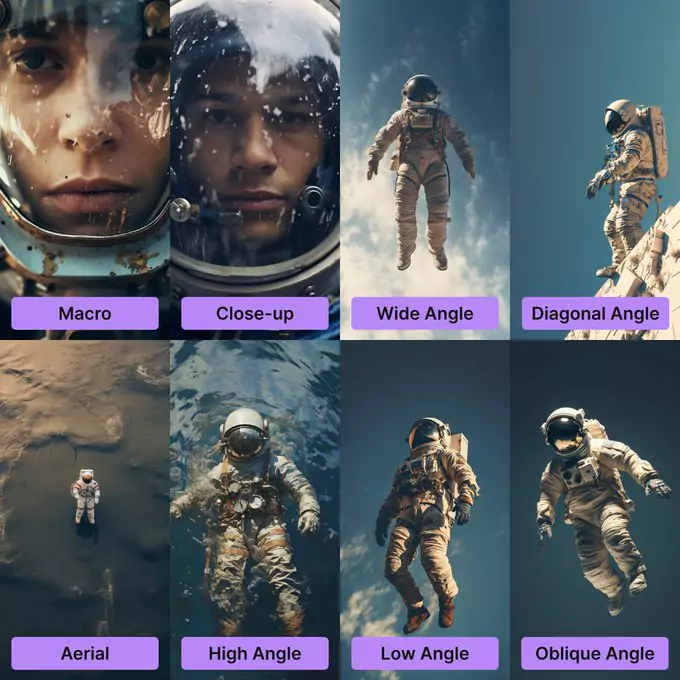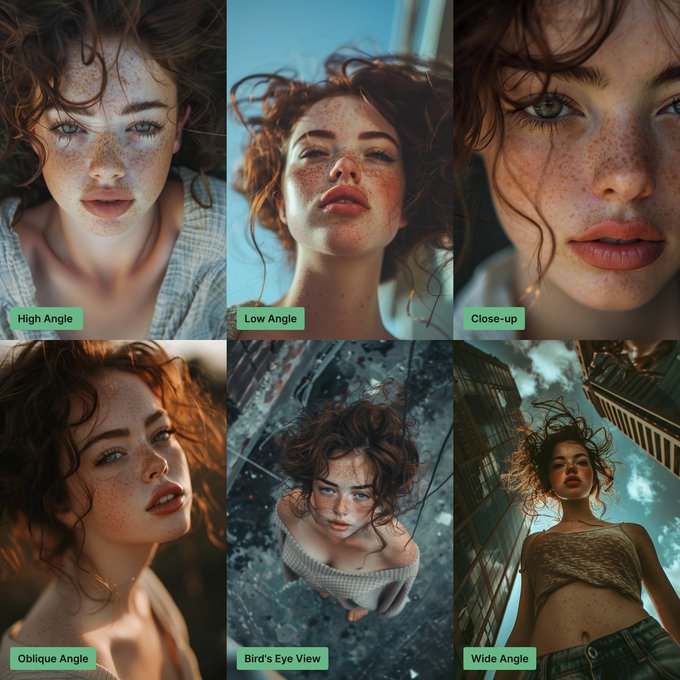One powerful feature of MidJourney is the manipulation of camera angles. Through experimentation and exploration, I’ve discovered several camera angles that consistently giving impressive results, particularly when working with consistent characters.
MidJourney V6 Camera Angles:
1. Macro:
Zooming in to capture intricate details, the macro angle adds depth and intimacy to your compositions. Perfect for highlighting fine features or subtle nuances, this angle immerses the viewer in the minutiae of your scene.
2. Close-up:
Similar to macro but with a slightly broader focus, the close-up angle brings subjects closer to the viewer, fostering a sense of immediacy and intimacy. Ideal for conveying emotions or emphasizing key elements within the frame.

3. Wide Angle:
Expanding the view to encompass a broad perspective, the wide-angle angle lends a sense of spaciousness and grandeur to your compositions. It’s great for capturing sweeping landscapes or expansive environments.
4. Diagonal Angle:
Injecting dynamism and energy into your compositions, the diagonal angle adds visual interest by introducing a sense of movement and direction. It’s effective for creating dynamic tension and drawing the viewer’s eye along a diagonal path.
5. Aerial:
Offering a bird’s-eye view from above, the aerial angle provides a unique perspective that can reveal patterns, symmetry, and context within your scene. It’s perfect for capturing sprawling landscapes or intricate layouts from a lofty vantage point.
6. High Angle:
Looking down from above, the high angle offers a commanding view that can convey authority, superiority, or vulnerability, depending on the context. It’s effective for establishing hierarchy or emphasizing the scale of objects within the frame.

7. Low Angle:
Conversely, the low angle looks up from below, imbuing subjects with a sense of power, dominance, or awe. It’s great for highlighting imposing structures or elevating the stature of characters within your scene.
8. Oblique Angle:
Slightly off-center and askew, the oblique angle adds visual interest by introducing a sense of imbalance or asymmetry. It can create a sense of intrigue or tension, making your compositions more dynamic and engaging.
9. Bird’s Eye View:
Similar to the aerial angle but with a more direct overhead perspective, the bird’s-eye view offers a comprehensive overview of your scene. It’s ideal for mapping out spatial relationships or creating intricate compositions with a top-down approach.
10. Wide Angle (Again):
Reiterating the importance of the wide-angle angle, it’s worth noting its versatility and ability to capture expansive vistas, immersive environments, and sweeping panoramas.
While these camera angles are derived from photography and are typically effective with objects found in photos, they can also enhance your Midjourney creations.
However, as with any AI-driven tool, their effectiveness may vary depending on your prompt and subject matter.
Demi Franco, a BTech in AI from CQUniversity, is a passionate writer focused on AI. She crafts insightful articles and blog posts that make complex AI topics accessible and engaging.